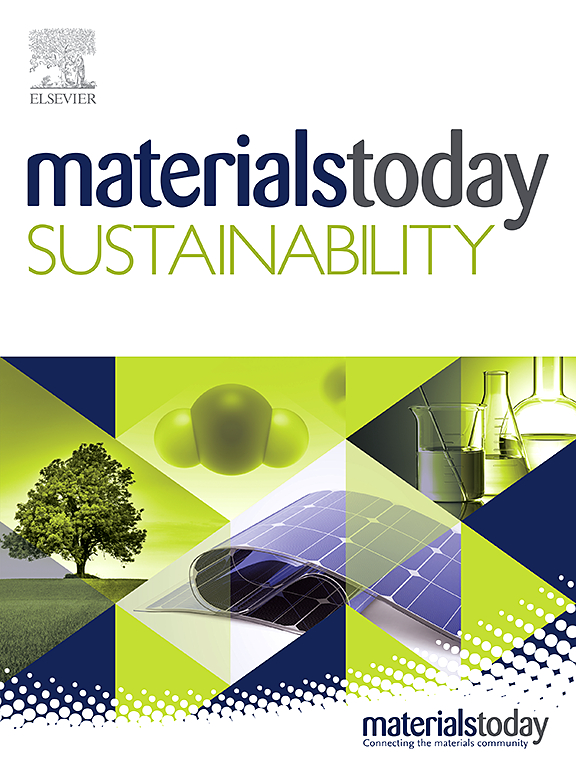Cux-MOF-5增强CO2吸附:最佳掺杂和再生性能
IF 7.9
3区 材料科学
Q1 GREEN & SUSTAINABLE SCIENCE & TECHNOLOGY
引用次数: 0
摘要
本文介绍了一种用Cu2+掺杂一步合成Cux-MOF-5材料的方法。采用XRD、FT-IR、TGA、SEM和N2吸附-脱附等温线技术对不同掺杂浓度下合成的Cux-MOF-5材料进行了表征。采用气体吸附仪ASAP 2020测试吸附剂在274.15 K和0-1 bar条件下的CO2吸附能力。结果表明,最佳工艺条件为150℃水热合成,Cu2+:Zn2+为0.05:1。Cux-MOF-5材料的最大CO2吸附量为4.6052 mmol/g,比未掺杂Cu2+的MOF-5材料提高了近31%。即使在连续8次吸附-解吸循环后,复合材料的再生率仍保持在97%以上,表现出完全的可再生性。提高材料对CO2动态吸附能力的因素包括微孔的存在、Cu2+对CO2的亲和力以及Cu2+和Zn2+交换导致的表面静电不平衡。但当Cu2+:Zn2+超过0.25:1时,会产生大量Cu-BDC,导致材料的吸附性能迅速下降。所得吸附剂参数表明Cu-MOF-5材料是一种很有前途的CO2吸附剂。本文章由计算机程序翻译,如有差异,请以英文原文为准。
Enhanced CO2 adsorption in Cux-MOF-5: Optimal doping and regeneration performance
This paper introduces a method for synthesizing Cux-MOF-5 material in one step by doping with Cu2+. The synthesized Cux-MOF-5 materials at different doping concentrations were characterized using XRD, FT-IR, TGA, SEM, and N2 adsorption-desorption isotherms techniques. The CO2 adsorption capacity of the adsorbent was tested using a gas adsorption instrument ASAP 2020 at 274.15 K and 0–1 bar. It was concluded that the optimal process conditions were hydrothermal synthesis at 150 °C with Cu2+:Zn2+ is 0.05:1. The maximum CO2 adsorption capacity of Cux-MOF-5 material was 4.6052 mmol/g, which was nearly 31 % higher than that of MOF-5 without Cu2+ doping. Even after eight consecutive adsorption-desorption cycles, the regeneration rate of the composite material remained above 97 %, demonstrating complete regenerability. Factors enhancing the material's dynamic adsorption capacity for CO2 include the presence of micropores, Cu2+'s affinity for CO2, and the imbalance of surface electrostatics due to Cu2+ and Zn2+ exchange. However, when Cu2+:Zn2+ exceeds 0.25:1, a large amount of Cu-BDC is generated, leading to a rapid decline in the material's adsorption performance. The obtained adsorbent parameters indicate that Cu-MOF-5 material is a promising CO2 adsorbent.
求助全文
通过发布文献求助,成功后即可免费获取论文全文。
去求助
来源期刊

Materials Today Sustainability
Multiple-
CiteScore
5.80
自引率
6.40%
发文量
174
审稿时长
32 days
期刊介绍:
Materials Today Sustainability is a multi-disciplinary journal covering all aspects of sustainability through materials science.
With a rapidly increasing population with growing demands, materials science has emerged as a critical discipline toward protecting of the environment and ensuring the long term survival of future generations.
 求助内容:
求助内容: 应助结果提醒方式:
应助结果提醒方式:


